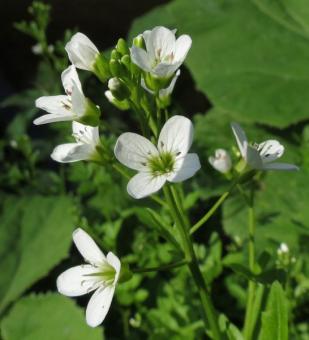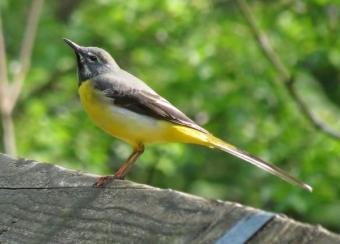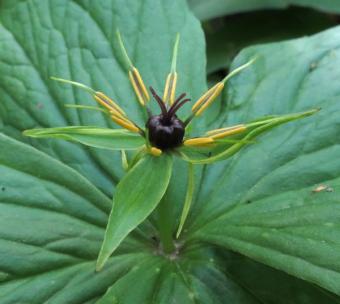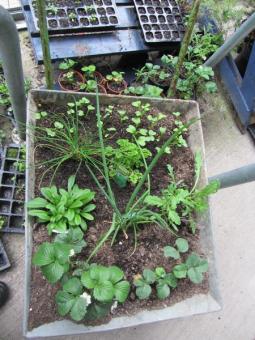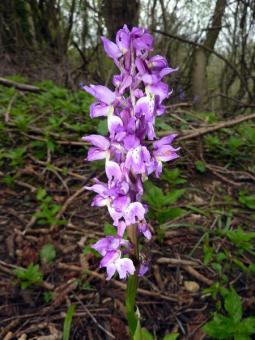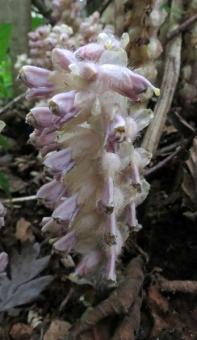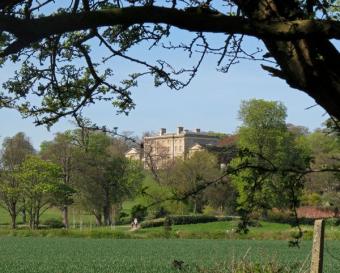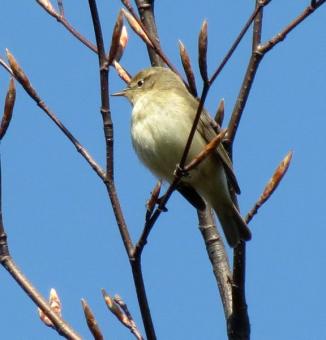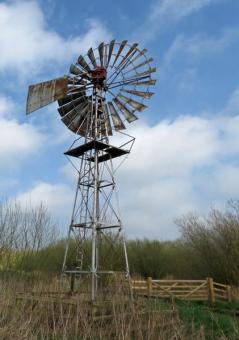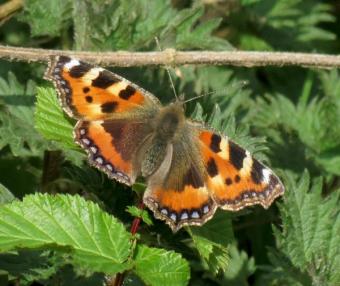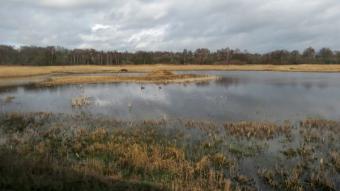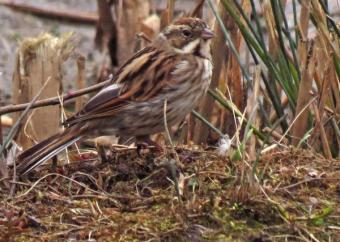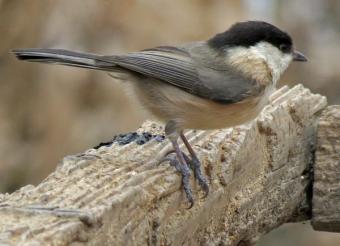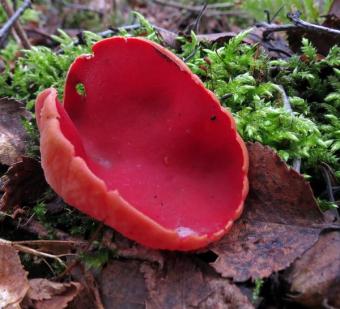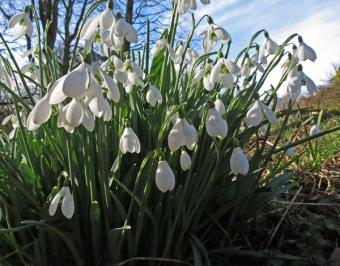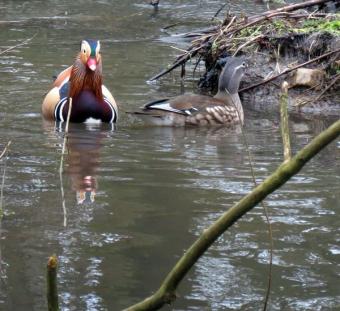WFV, Hardcastle Crags, 6th May 2014
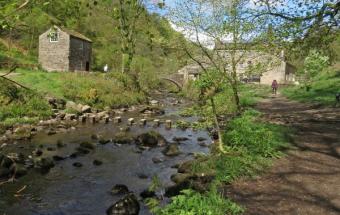 Gibson MillWe were blessed with really beautiful weather for this week's trip to Hardcastle Crags. There was a slightly delayed start due to some minibus issues but Stuart kindly stepped in to drive the old bus at short notice and a badly signposted diversion en route to Hardcastle Crags led us down some interesting and challenging roads where we passed a couple of llamas. A couple of cars were waiting for us on our arrival. We divided into 2 groups. Donald led one on the riverside path and Joan led the other taking the easier estate road.
Gibson MillWe were blessed with really beautiful weather for this week's trip to Hardcastle Crags. There was a slightly delayed start due to some minibus issues but Stuart kindly stepped in to drive the old bus at short notice and a badly signposted diversion en route to Hardcastle Crags led us down some interesting and challenging roads where we passed a couple of llamas. A couple of cars were waiting for us on our arrival. We divided into 2 groups. Donald led one on the riverside path and Joan led the other taking the easier estate road. 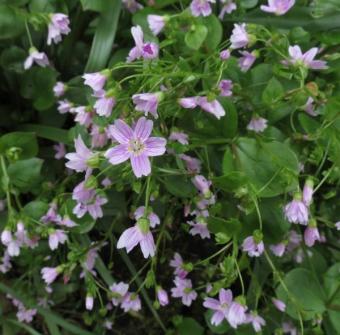 Pink PurslaneA roe deer was sighted by a couple in the group but the deer then came further out into the open and we were all able to see it. There were good displays of bluebells and in places these intermingled with swathes of pink purslane. There was much bird activity. On the river we saw a dipper and a mallard with 11 ducklings. Both mistle and song thrush were seen in or under the trees along with goldcrest,nuthatch and treecreeper. At Gibson Mill we stopped for lunch. After lunch Donald's group continued beyond Gibson Mill crossing 3 bridges before climbing up to the estate road to walk back. Close to the bridge at Gibson Mill I heard some scurrying in the vegetation. I stepped back and waited and was delighted to see a mouse make a brief appearance from a hole near the ground.
Pink PurslaneA roe deer was sighted by a couple in the group but the deer then came further out into the open and we were all able to see it. There were good displays of bluebells and in places these intermingled with swathes of pink purslane. There was much bird activity. On the river we saw a dipper and a mallard with 11 ducklings. Both mistle and song thrush were seen in or under the trees along with goldcrest,nuthatch and treecreeper. At Gibson Mill we stopped for lunch. After lunch Donald's group continued beyond Gibson Mill crossing 3 bridges before climbing up to the estate road to walk back. Close to the bridge at Gibson Mill I heard some scurrying in the vegetation. I stepped back and waited and was delighted to see a mouse make a brief appearance from a hole near the ground. 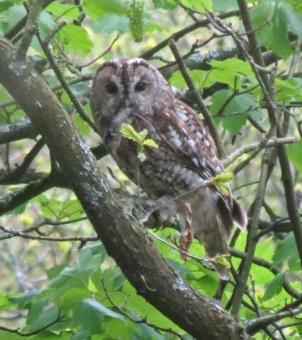 Tawny OwlHeron and grey wagtail were seen on the river. In total 30 birds were recorded. A green woodpecker was heard. 74 plants in flower/ferns were noted, the highlights being fairy foxglove on the bridge, hairy woodrush, 3 nerved sandwort and wood speedwell. Fungi included turkeytail, dryad's saddle and lumpy bracket.
On the estate road back to the car park we came across a toad which was safely placed in vegetation on the side of the path. Further on I noticed a large hole in a tree from which I saw the head of a baby tawny owl. It quickly drew back into the hole and only a small part of its light grey downy plumage could be seen. I waited to see if it might emerge once more. Unfortunately it did not, but a commotion in a nearby tree drew my attention to an adult tawny owl seeing off another bird and it then sat quietly in the tree and was still there when I had to leave to get back to the car park. Many thanks to Donald and Joan for leading this splendid day out.
Tawny OwlHeron and grey wagtail were seen on the river. In total 30 birds were recorded. A green woodpecker was heard. 74 plants in flower/ferns were noted, the highlights being fairy foxglove on the bridge, hairy woodrush, 3 nerved sandwort and wood speedwell. Fungi included turkeytail, dryad's saddle and lumpy bracket.
On the estate road back to the car park we came across a toad which was safely placed in vegetation on the side of the path. Further on I noticed a large hole in a tree from which I saw the head of a baby tawny owl. It quickly drew back into the hole and only a small part of its light grey downy plumage could be seen. I waited to see if it might emerge once more. Unfortunately it did not, but a commotion in a nearby tree drew my attention to an adult tawny owl seeing off another bird and it then sat quietly in the tree and was still there when I had to leave to get back to the car park. Many thanks to Donald and Joan for leading this splendid day out. Sue

